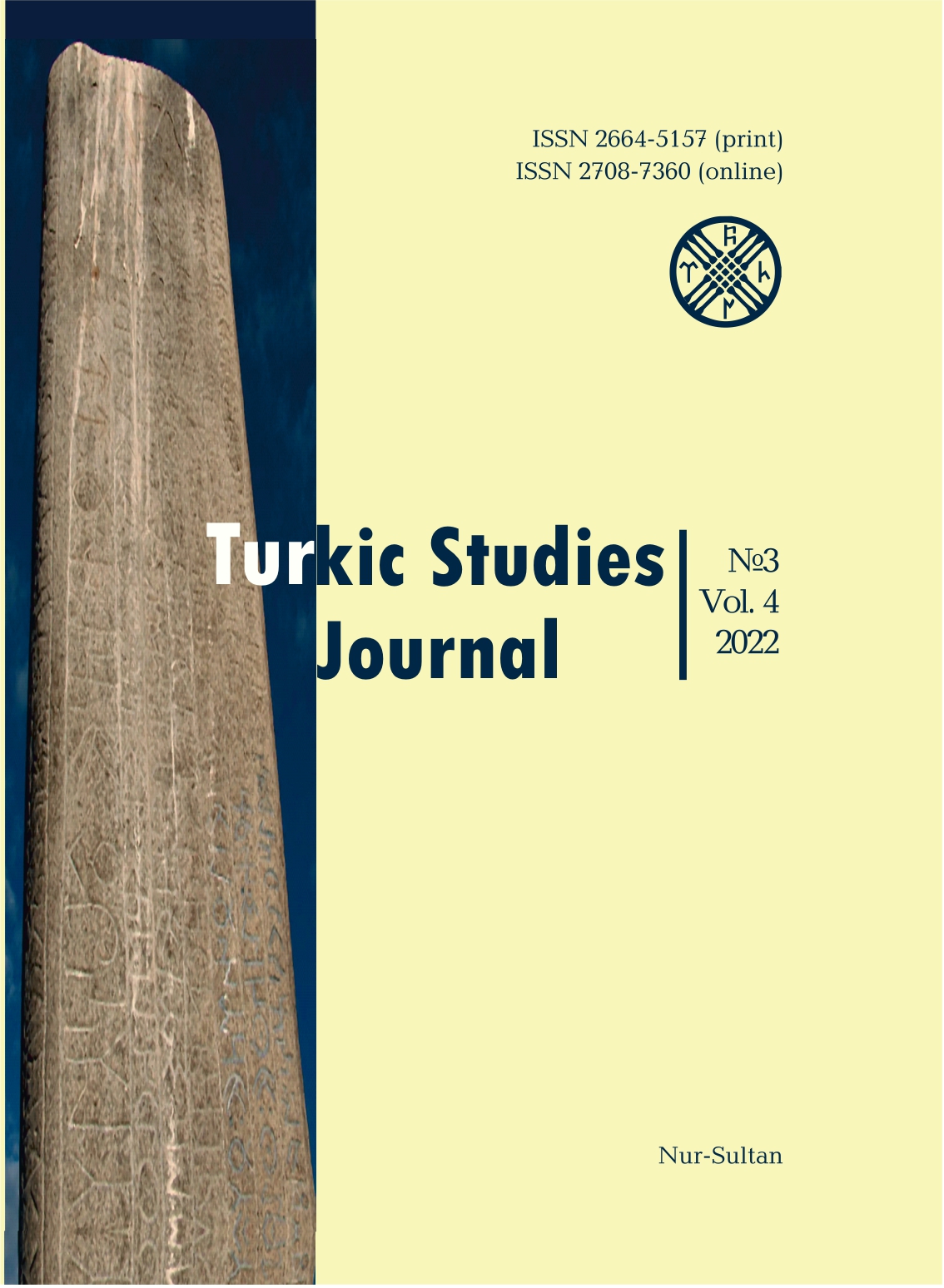Design features of kamcha with a meadowsweet handle from the Ulkensor burial mound (interdisciplinary analysis)
Views: 298 / PDF downloads: 513
DOI:
https://doi.org/10.32523/2664-5157-2022-3-128-140Keywords:
ethnography, folklore, Turkic folklore, archaeology, kamcha, meadowsweet, kamcha with meadowsweet handle, nomadsAbstract
Kamcha played an important role in the culture of the steppe peoples of Eurasia during
the long period of nomadic pastoral life. Many folk ideas are connected with it, reflecting various
aspects of rituals and ritual actions. Kamcha was a symbol of rulership, a companion of a person, a
weapon of a hero and in traditional culture a talisman of Shanyrak.
In 2020, a burial mound from the early Saka time (7th-6th century BC) was explored near Burabay.
During the research, a number of objects of the culture material of the Sakas were found in the burial,
including a ceremonial setting belt, a dagger, and the remains of a quiver with arrows and kamcha.
It should be noted that the kamcha is the first find of cultural artifacts of this type in this region.
Of particular interest among these finds was a handle made of a material identified as tobolga. The
kamcha with a handle made of meadowsweet from a burial near Lake Ulkensor became the object of
study of the present article.
The authors of the article give an archaeological description of the burial mound from the early
Saka period as well as a description of the finds in the burial and perform a visual reconstruction of
the kamcha.
In addition, based on archaeological, ethnographic and folklore sources, the constructive components
of the kamcha such as whip, handle and grip material are analyzed in an interdisciplinary aspect. The
analysis of the components of the kamcha is confirmed by written sources and folkloric texts.


























